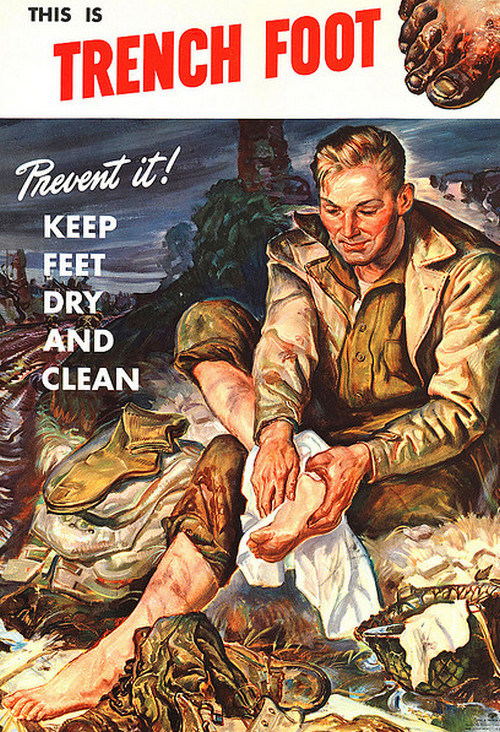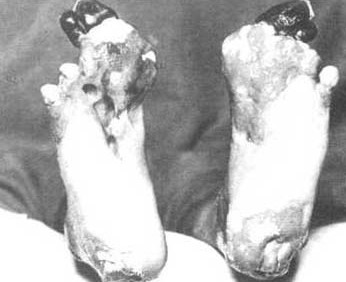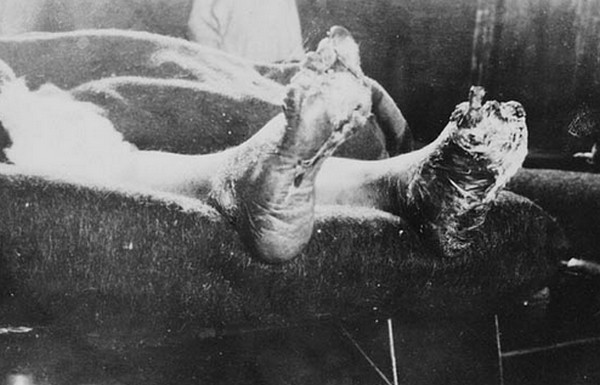Trench Foot Definition
Trench foot is a medical condition, which is caused by the infection of the foot brought about by prolonged exposure to wet, cold and unsanitary conditions. This was a common occurrence among soldiers during the First World War and the Vietnam War.
Trench foot is one of the three immersion foot syndromes. The other two are warm water immersion foot and tropical immersion foot, which is also known as paddy foot. Warm water immersion foot differs from trench foot as exposure would be to wet but warm conditions for 48 hours or even longer. Tropical immersion foot, on the other hand, refers to the exposure of the foot in mud or water greater than 22 degrees Celsius for a couple of days or even more.
The term trench foot was derived from the trenches that were quite common during World War I. Soldiers had to stand for hours on wet trenches as their feet remain soaked in dirty water. The boots and the socks of the soldiers were not able to protect them from eventually developing trench foot as the soldiers would have no chance to remove or change them during the war.
Causes of Trench Foot
Trench foot develops when the foot is exposed to extremely cold and damp conditions. Constricted footwear would also aggravate the condition. The temperature in which the foot would usually be exposed to would range from 32 up to 60 degrees Fahrenheit and could occur with as little as 12 to 13 hours of exposure to unsanitary conditions.
The mechanism with which immersion foot syndromes occur is not fully understood. Cellular and tissue damage occurs from the skin and penetrates into the subcutaneous tissues, blood vessels until it reaches the nerve endings. The degree of injury would usually depend on the length of exposure to the cold condition. In addition, certain physical conditions like hyperhidrosis or excessive sweating has also been linked as aggravating trench foot conditions.
Trench foot may be temporary or may lead to a permanent condition depending on the degree of injury of the foot. Chillblains is the term used to describe several incidences of trench foot.
Signs and Symptoms
- Poor vascular supply in the foot may lead to the feet becoming numb and cyanotic.
- Tingling and itching sensations may also be felt.
- Loss of sensation in the foot is also common.
- Pain and swelling of the foot are also common occurrences especially after the foot becomes warm.
- Blisters may appear two to seven days after exposure to wet conditions. This may then be followed by the sloughing off of tissues.
- Maceration and fissures of the skin are also possible.
- Leg cramps are also quite common for those afflicted with trench foot.
- Progression of the condition to open sores may eventually lead to the development of fungal infections. This progression may be referred to as jungle rot or tropical ulcer.
- Gangrene may result if the condition is left untreated.
- Involvement of the toes, heel and the entire foot is possible especially in severe cases which are left untreated.
Trench Foot Pictures

Picture 1 : Trench Foot prevention

Picture 2 : Trench Foot

Picture 3 : Trench foot as seen on a soldier during World War I
Treatment and Prevention
- The key to treating and preventing the occurrence of trench foot is by keeping the foot dry and warm. It is also important to maintain good hygiene and prevent places where there may be prolonged exposure of the foot to cold and unsanitary conditions. Excessive sweating of the foot should also be avoided if possible. Socks and footwear should remain dry at all times and should be regularly changed.
- The affected foot should be applied with warm packs or soaked in warm water, preferably within 102 to 110 degrees Farenheit. This should be done for approximately 5 minutes.
- Socks should not be worn when resting or sleeping. This is to promote circulation in the foot area.
- Medical assistance should be obtained if possible symptoms like itching, numbness and pain are noted.
- Surgical amputation of the foot may be necessary if gangrene and necrosis sets in.
- It is also important to remember that the trench foot is a wound and could therefore serve as a portal of entry for microorganisms and for infection to set in.
- The affected foot should also be checked daily for development of further wounds or the possible worsening of the symptoms.
References
http://emergency.cdc.gov/disasters/trenchfoot.asp
http://en.wikipedia.org/wiki/Trench_foot
